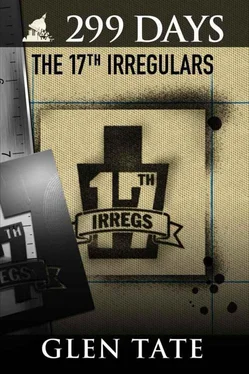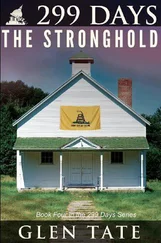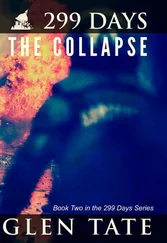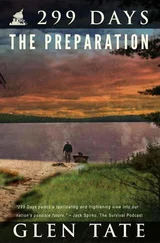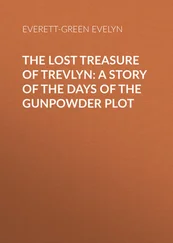“But people need banks, at least the kind we want to start,” Bruce said. He went on to explain that the new bank would not be like the old kind that got electronic credits from the Federal Reserve and then loaned the money out and got interest back, with everything being paper or electronic. No, the new banks springing up would be like the old kind of banks: a place where value could be stored and honest loans could be made. The community would be in charge of the bank instead of some corporation in New York. Most importantly, the banks would be where money was backed up by something real, not the “full faith and credit of the United States of America,” an entity which pretty much didn’t exist anymore.
The new banks, called “free banks” because they would operate in the free areas of the country, would be like the ones 100 years ago. They were totally private enterprise ventures; no government involvement. Each bank issued its own bank notes, which resembled dollars and were hard to counterfeit. They were like certificates of deposit. They created their own currency, which became known as “Free dollars,” or “F$.”
For example, a person might deposit F$10,000 worth of gold or ammunition with the bank and receive F$10,000 worth of bank notes. The depositor essentially sold the bank the goods and took bank notes in exchange. Any person with the bank notes could walk into that bank and redeem them for gold or ammunition, or anything else worth that amount that the bank had.
These bank notes could be traded like paper dollars—with one huge exception: the bank notes were backed up with actual value. Real, valuable things like gold, silver, and hard-to-get commodities, like fuel. The bank wouldn’t issue more notes than it had assets to back up the notes; if it did, the value of the notes would plummet and no one would use them. And the people in town would probably kill them.
Bank notes would be redeemable on the spot, not some electronic credits on a computer that said the person had some dollar amount and then the bank put that amount worth electronic credits onto the account of that person. No, free bank notes could be redeemed for real things.
Barter could only go so far. A person could only trade items with someone who wanted the items they had. This was a huge limitation. If the buyer and seller didn’t need the exact same thing, then no trade could happen. People in Joe’s area needed a currency. They needed a way to buy and sell things.
Lots of little trades were currently being done by barter. Actually, new mini forms of currency were being used. Silver coins and ammunition were common currencies. There was an incredible demand for .22 ammo, since it was small and (before the Collapse) cheap so it could be used as change. If a round of 9mm was worth $20 in FUSA, or Former USA, money, a round of .22 might be worth $1 in FUSA money. Therefore, .22 could be used to make change and to trade things with smaller values.
Obviously, FUSA dollars were worthless. Worse yet, no one even had access to their FUSA dollars because the government had taken them all away by closing the banks. FCards, or “Freedom Cards,” were kind of a currency, but they were still based on electronic credits in a computer and were controlled by the government. The government could shut down a person’s FCard account in a few keyboard clicks. More importantly, there wasn’t always food or other items in the stores to buy with the FCards. The people in Joe’s area needed a new currency.
But, if the run up to the Collapse had taught people anything, it was that a fake currency based on electronic credits and promises to repay were worthless. It led to inflation—horrible inflation because the dollars weren’t backed by anything since the Federal Reserve created the dollars out of thin air. Savings held in FUSA dollars were eaten up by inflation, which meant the savings were basically taken by the government. A local currency could solve the problem.
The free bank note would only work in the areas where the notes were recognized, which was a limitation that would have to be solved later, on the larger scale. But at least the free areas, which were the rural areas at that point, would have local currencies.
There was one “disadvantage” to a free bank that was also actually an advantage. With a free bank, a person couldn’t “instantly qualify” for a $10,000 credit card and go spend the electronic credits on a computer ledger on vacations, expensive clothes, or whatever. Instead, with a free bank, someone needed to have $10,000 worth of value to deposit and then he or she got a note worth that amount. The old bank’s $10,000 credit card—backed up by nothing, easily spent on stupid stuff, and putting the card holder in debt for years and years—was hardly an advantage to the consumer. It was a huge advantage for the old bank and the merchants who took the fake money to sell useless things. The last thing America needed was more of the fake money, overspending, and debt that marched the country right into the Collapse.
Free banks would solve that problem by making money scarcer. That’s right: less money could be a good thing. It’s possible to have too much money in circulation, which can lead to $10,000 pre-approved credit cards. It also led, Joe remembered, to $100 trillion in unfunded liabilities by the federal government and runaway inflation.
Bruce continued, “People depositing things of value need to get them to our bank. And our bank needs to guard them once they got there. If a depositor has ten ounces of silver to deposit, he needs to physically get it to the bank and we need it to stay here.” Bruce paused and then said, “Joe, that’s where you come in.”
Joe smiled. “As you might have heard,” he said, “I happen to have a few armored cars. Could that be something of service to your bank?” Of course, Joe knew the answer.
Bruce smiled back. “Well, yes, now that you mention it.” He gave Joe a big Southern grin that spoke volumes.
“Might you need some guards for the bank?” Joe asked with another smile.
“Hmm. I guess so.” Bruce chuckled and went on to explain that they could hire local guys to hold rifles and guard the place, but they needed training for them. And, more importantly, they needed outside guards who could guard the local guards.
“How can you trust me to not rip you off?” Joe asked.
“We’ve known you for years here,” Bruce said. “Besides, if you wanted to rip us off, you could do it now.”
“And,” another banker said, “Everyone in town knows that you and your guys are the only security in town. If we try to set up a bank without you, it’s pretty obvious that you could ride in and take all the deposits. Having ‘security by Joe’ is what people need to see so they’ll have some confidence in the security of their deposits.”
“OK, you guys trust me,” Joe said to them, “but how do the rest of the people in town trust me not to take their stuff?”
“Same reasons we have to trust you,” Bruce said. “Hey, people need to trust us. If they don’t, then they don’t have a secure way to get their deposits to us and they don’t have our bank notes to use. If they don’t want to use our services, that’s fine. They’re on their own. They can try to buy a piece of land or a factory with ammunition if they want. Good luck with that.”
“Yeah,” another banker said, “we have a profit motive in making sure people trust the bank. We’ll do lots of things to increase people’s trust, like let people come and see our assets. So they don’t think it’s some myth like all the gold bars in Ft. Knox.” That was a reference to the FUSA’s claim that there was enough gold under guard at Ft. Knox to back up the dollars in circulation, which was a complete fantasy. At the beginning of the Collapse, it was revealed that there was no gold there.
Читать дальше
